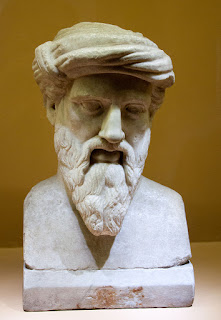Allegedly, scientists discovered the earliest musical instrument dating between 43,000 and 42,000 BC.
The initial instances of western music are mainly Greek and their notations and condition are such that it can only be speculated and extrapolated as to how they should sound. Popular Greek instruments like the lure and the aulos, a double reed instrument, were both based on instruments from Egypt and Mesopotamia.
In Greek philosophy, music was believed to represent harmony throughout the universe. The incorporation of musical study in philosophy led to what we now describe as music theory.
Poetry was an integral component of art during this period and it figured significantly into much of the period’s music. Song, dance and poetry were regularly acted out to honor the Greek gods.
The Romans further elaborated on the music of the Greeks. Traditional Roman melodies based upon Greek ones were set to scripture, leading to what are termed Early Christian Chants and later, Gregorian Chants.
In China, a legend maintains that the founder of Chinese music is Ling Lun who, in an effort to mimic bird sounds, carved pipes from bamboo. Bone flutes found in Henan date back 9,000 years ago.
Carnatic music in ancient India was adapted from Persia and Islam. They are noted for their religious nature and singing style. The tambura played a drone which became a major feature of Raga, a subsequent classical Indian style.
These musical foundations proliferated throughout the ancient world influencing life and culture and informing disciplines such as art and dance as well as linking to the studies of mathematics and physics. Next week we’ll venture into the ancient world of art. See you then.
Contact Chris: |  Christopher Robinson |

















